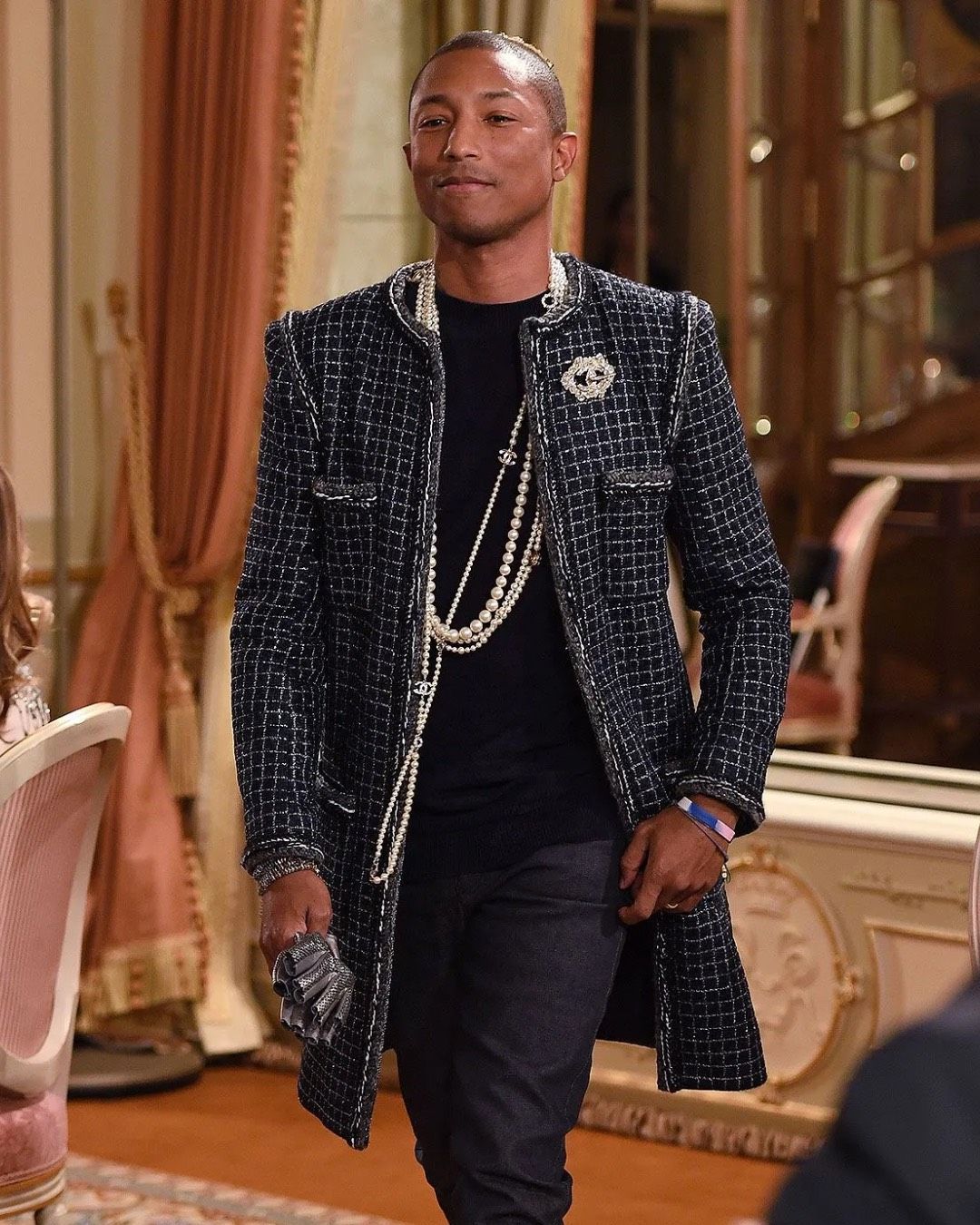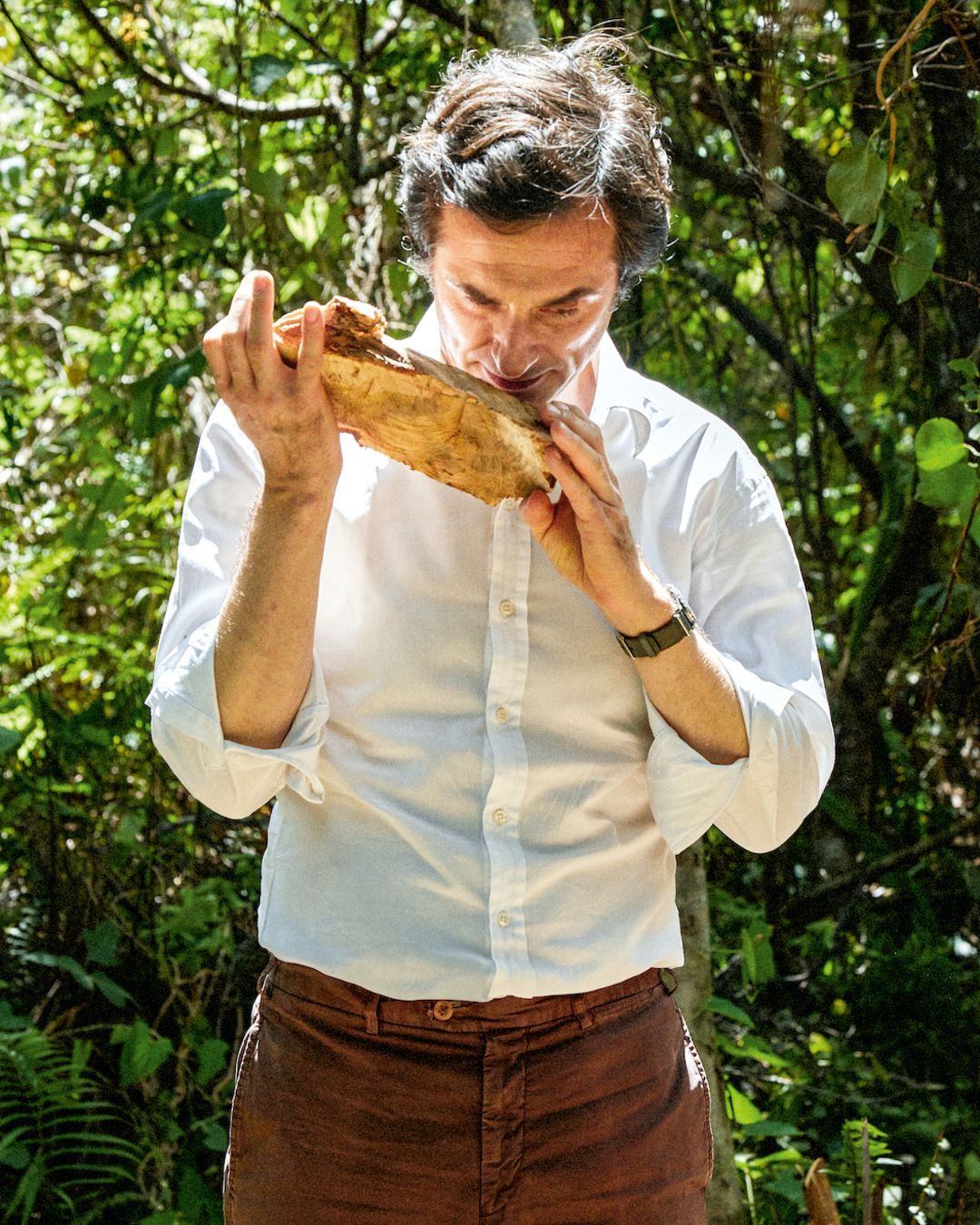
Is Chanel becoming a genderless brand? More and more men want to wear garments from the maison most desired by women
Likely, a woman like Gabrielle Bonheur Chanel would shudder at the thought of seeing one of her chain bags worn by Pharrell Williams or Jacob Elordi. Let alone one of her jackets and cardigans, which she had skillfully transformed from soldiers' wardrobes into tweed, pearls, and jewel-adorned masterpieces, penning one of the most enduring (and irreplaceable) fashion treaties in global history.
For Coco Chanel, Men were Accessories
Chanel, without beating around the bush, is a brand designed and created specifically for women - "I found refuge in rags" was perhaps one of the phrases with which she urged women to roll up their sleeves to move freely among the double C buttons. For Coco Chanel, men were at most accessories to appear in public, certainly not potential buyers to invest in. Who would have thought that, at a certain point, a large group of men - from rapper Kendrick Lamar to South Korean singer-songwriter G-Dragon, to Marc Jacobs or Bryan Yambao - would start to crave being part of that universe designed to be reserved for women?
The Era of Karl Lagerfeld
After debuting in 1955 with the Pour Monsieur perfume line and expanding the beauty line in the '90s and early 2000s, it was Karl Lagerfeld's creative direction that fueled the false hope that Chanel might consider venturing into menswear by presenting a collection, the FW04, where the brand's bouclé was folded into a narrative fabric to tell a sort of cross-dressing story of androgyny, country allure, streetwear, and endless tweed. "Specifically, we're not saying no to men, but reiterating that the essence of Chanel is womenswear" Bruno Pavlovsky, President of Fashion at the French Maison, had already explained to the New York Times in 2005.
Brad Pitt as Chanel Ambassador
Seven years later, however, Chanel chose Brad Pitt as the face of the campaign for the iconic No. 5 women's perfume, bearing a message that leaves no room for misunderstandings: Inevitable. Perhaps the idea was creeping in that, in reality, Chanel's heritage could afford to play with gender categories? A clever move that later allowed the brand to enlist a celebrity of Pharrell Williams' caliber, choosing him first as the face for the Gabrielle bag campaign in 2017 and then sending him straight down the runway in 2018 - not just any runway, but one set up like Egypt at the Metropolitan Museum of Art in New York for the Métiers d'Art show.
Pharrell Williams' Advent
A debut marked by golden pants and boots, paired with a bouclé sweater in the same tones that, just a year later, would give life to the first collaboration between Chanel and the American artist, Chanel x Pharrell. T-shirts, hoodies, shoppers, jewelry, belts, hats, flashy granny loafers, eccentric glasses, and sneakers to seal a capsule collection born from an uber-pop restyling of Chanel, where a potential association with Karl Lagerfeld might even have seemed inappropriate - "Women will save the world," suggests the writing on a sneaker proposed by Pharrell, once again emphasizing that Chanel will remain a female brand both in terms of design and commercial offerings. However, Williams has paved the way, consecrating the double-C brand as an aesthetic citation for a niche of men aware of making a very specific choice: differentiating themselves from the rest of the male crowd by wearing the quintessential luxury female brand.
In the Words of Men Who Wear (and Make Wear) Chanel
"There's this sense of flirtation when men wear Chanel," said Yashua Simmons, a stylist who dressed rapper Givēon in various Chanel looks for events including the Met Gala, the Grammy Awards, and Coachella, speaking to the Wall Street Journal. "It's the most unexpected thing a guy can have today," he continued to explain. Chanel has thus become a brand worn by men, even though it has never produced menswear - quite a paradox. "In Chanel, I feel free," declared the well-known Bryanboy, alluding to his collection of over 60 jackets and cardigans carefully preserved in his IG feed. If the queer community found an ally in Chanel in constructing a gender-defying identity, and rappers turned it into an aesthetic-narrative tool to communicate a flamboyant pop star lifestyle, it's naive to think we live in a world where the brand's commercial and press offices are unaware of the unexpected allure exerted on men.
The Era of Virginie Viard: Chalamet and Lamar
Even Virginie Viard, creative director of the Maison since March 2019, seems to have embraced the operational plan of quietly sponsoring and attracting more and more men towards the brand's powerful imagery. In 2023, she decides to enlist Timothée Chalamet as the new ambassador for the Bleu de Chanel perfume and invites American rapper Kendrick Lamar to the Couture FW23 show, who, not by chance, showed up in black pants with a logo and a cream-colored tweed jacket embellished with pearls. The shocking pink explosion generated by the movie Barbie outside the cinemas, and the choice to celebrate Karl Lagerfeld at the MET Gala 2023, catapulted Chanel's entire archive into the frenetic chatter of Instagram and TikTok, setting up a true sociological mass phenomenon rather than just one of the many Gen Z trends.
Jacob Elordi's Bags and Magazine Covers
From the Chanel red carpet, it ends up, mostly in the form of bags, in the hands of content creator and stylist Marc Forne and actor Jacob Elordi, creating a potentially effective product placement strategy for all sexes and genders. Marc Jacobs, on his Instagram profile, lets us know that he approves of the iconic rouge noir nail polish as well. Men dressed in Chanel, as if that weren't enough, are also making appearances on magazine covers: Elle Korea dedicates its June cover to K-Pop king, alias G-Dragon, photographing him in a full double-C look in black and white.
Jacob Elordi with his Chanel bag. pic.twitter.com/LD5VBD3S9z
— Best of Jacob Elordi (@BestJacobElordi) September 8, 2023
The male audience
The truth is, for a genetically female brand like Chanel, men are still accessories to flirt and play freely within a market that can afford to speak to everyone with minimal commercial effort. If one day the historic Parisian Maison were to actually consider venturing into menswear, it might even risk losing the approval of its XY devotees - disappointed by the idea of no longer being able to wear garments created by a woman for women. Call it a friends with benefits relationship, but the goal of reaching 20 billion dollars in revenue is getting closer for Chanel. Better if with the unconditional love of men in double-C, ça va sans dire.

























































